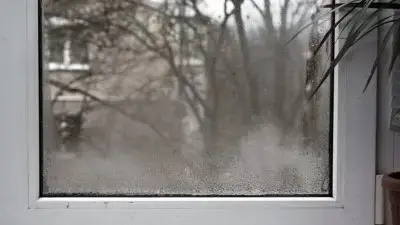Food waste can occur in a variety of ways such as spoiled raspberries that don’t make it to the dinner table, leftovers that you never get around to eating, or apple peels that go straight into the trashcan. No matter how it looks, household food loss wastes money and energy.
What is food waste?
The U.S. Food and Drug Administration’s (USDA) Economic Research Service defines food waste as “the edible amount of food, postharvest, that is available for human consumption but is not consumed for any reason.”
In 2015, as a response to the growing food waste problem, the USDA and the U.S. Environmental Protection Agency (EPA) set a goal to decrease food waste in the U.S. by 50% by 2030.
According to the Natural Resources Defense Council (NRDC):
- 400 pounds of food per person are thrown out every year, producing more greenhouse gas emissions than 37 million cars annually
- 30% of food produced globally is wasted every year
- About 40% of all food produced in the U.S. does not get eaten, which is comparable to buying five bags of groceries and leaving two of them behind
- The average U.S. household of four throws away $120 of uneaten food every month
- Landfills come in at number 3 on the list of the largest sources of human-generated methane emissions in the U.S. (Food waste is a big contributor to this!)
Rethink how you store food at home
If you find yourself throwing away food because it has spoiled, revisit your food storage habits and make changes to increase the longevity of your food. For example,
- Celery should be stored upright in a glass of water in the refrigerator
- Bananas should not be next to other fruits on the counter, and once ripe, should be stored in the fridge
- You shouldn’t wash fruit until you’re ready to use it
- It’s best to store tomatoes on the counter, stem end up
- You spoil mushrooms when you place them next to anything with a strong smell as they easily absorb odors, which changes their composition
Freezing food is also an effective way to save food that you don’t need right away. (Did you know that many studies show that the nutrients in frozen versus fresh produce are almost identical?)
Check out this easy-to-use guide for proper food storage and freezing tips for a variety of food items.
Take the ‘root to leaf’ approach
What about all the skins, “yucky parts,” and seemingly inedible pieces of your fruits and veggies? You guessed it – that can be another form of food waste. End the cooking habit of peeling, cutting, and discarding immediately and instead, reconsider how you look at your food from top to bottom.
- Eat the edible parts of food that are sometimes thrown away like carrot, apple, and potato peels or broccoli stalks
- One way to use edible vegetable scraps is to keep a “stock bag” in your freezer where you collect trimmings of vegetables which can eventually be tossed into boiling water to make vegetable stock
- Use imperfect, yet still healthy, parts of your produce in soups or smoothies
Compost your food scraps
There are bound to be some scraps – and that’s when compositing comes into the picture. Composting at home reduces methane emissions that come from landfills, but only about 6% of food waste is actually composted, according to the NRDC.
If you toss your food scraps in the trash, thinking that they will break down the same way in a landfill as they would in a compost system, think again! The lack of oxygen that you find in the piles at landfills impacts the gases that are produced during decomposition.
The gas produced from scrap decomposition in a landfill is made of up of approximately 50% CO2 and 50% methane. (The methane comes from the lack of oxygen available.) A compost pile decomposes with oxygen, producing mainly CO2 during the process. Keep in mind that methane is 28-36 times more negative to our environment than CO2!
You can compost common items such as coffee grounds, eggs, fruits, and vegetables, but did you know you can also compost things like fireplace ashes, tea bags, yard and grass clippings, human hair, and pet fur?
For more information about composting and tips for getting started, go here and here.
Understand “best by” food labels
Did you know that product dating is not required by Federal regulations? The USDA states that “manufacturers provide dating to help consumers and retailers decide when food is of best quality. Dates are not an indicator of the product’s safety and are not required by Federal law.”
According to the USDA, “30% of the food supply is lost or wasted at the retail and consumer levels.” The USDA continues to say that one source of this food waste arises from good food being thrown away due to concerns about “Best if used before” and “Use by” dates. While many times these types of labels are interpreted as safety warnings, they are actually an indication of peak quality.
Before you toss something that you think has “expired,” go here first to learn more about accurately interpreting food labels.
The next time you go to the store or cook a meal at home, think about how you can make the most out of the food you buy, letting as little as possible go toward harming our environment or wasting energy and money.
Curbing food waste is just one more thing we can do to make our planet greener today, and for future generations to come. Together, we can make a difference.
For more ways to save energy and money at home, call HomeWorks Energy at (781) 305-3319.








